The EPOMAKER x AULA F87 Pro is TKL variant of the ‘F’ series of keyboards between EPOMAKER and AULA. The AULA F87 Pro is a plastic keyboard that is capable of wired & wireless connections, comes completely built with switches and keycaps, which retails for US$76.
Unboxing
Here is what you will find the box:
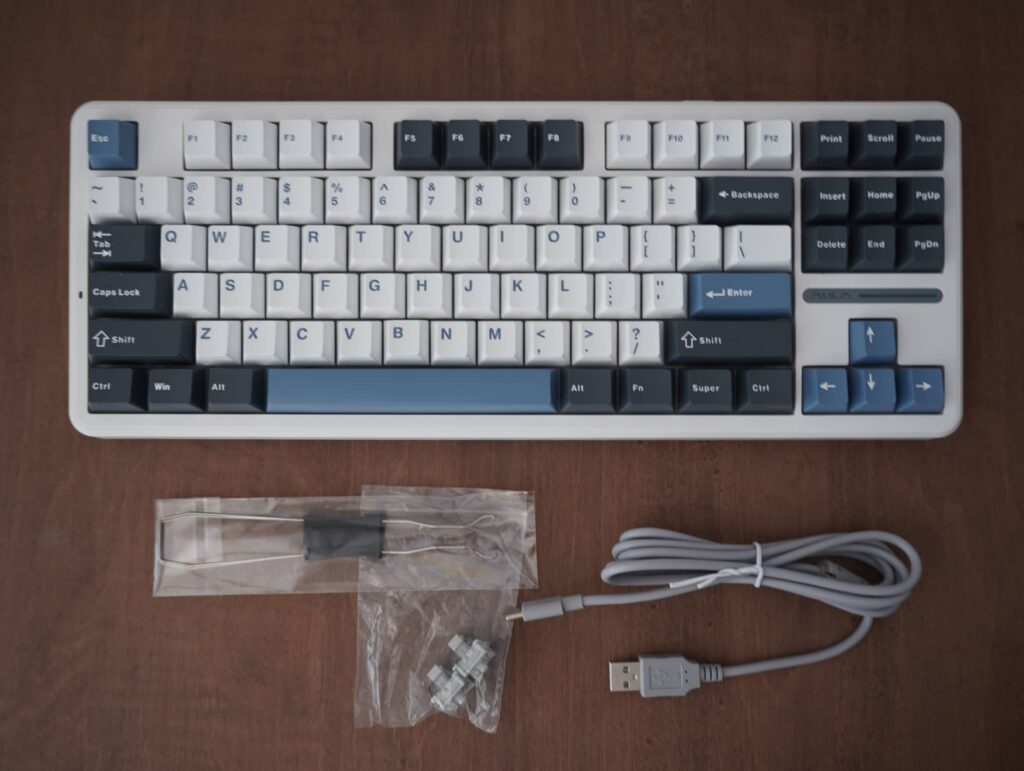
- EPOMAKER x AULA F87 Pro keyboard
- 2.4G Receiver
- Switch Puller
- Spare Switches x2
- USB-C Cable
- User Manual
Build quality and design
The EPOMAKER x AULA F87 Pro keyboard is available in four colour options – (1) White Blue, (2) White Green, (3) White Orange, and (4) Black. The unit I have is the ‘White Blue’ variant which comes with keycaps design inspired by GMK Arctic. It’s nice to see Cherry profile keycaps used on the AULA F87 Pro as it personally gives off a cleaner aesthetic.
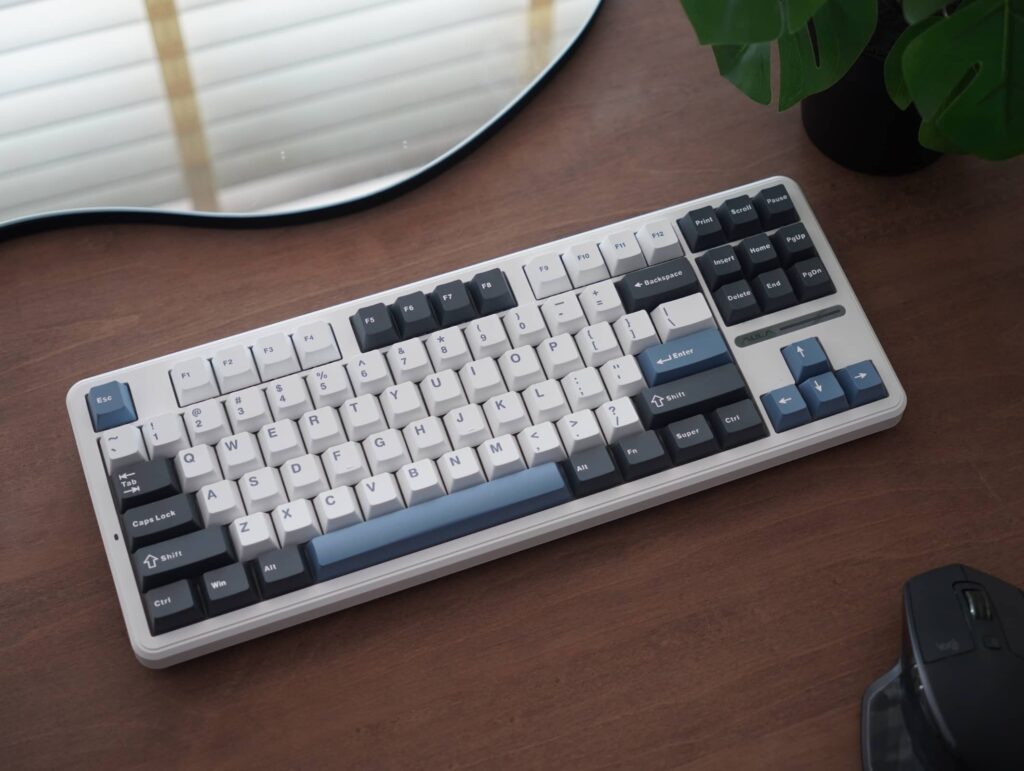
The design of the AULA F87 Pro is quite interesting. It has a relative rounded shape to its borders and edges. The side profile uses a notch based angular design that showcases a RGB strip. The space above arrow cluster gets the AULA branding along with another RGB light strip. The build quality of the plastic AULA F87 Pro is quite good. It has some heft to it weighing in at 1.7kg. Plastic is used in almost all of the case, including the rubber feet that has two different height adjustments.
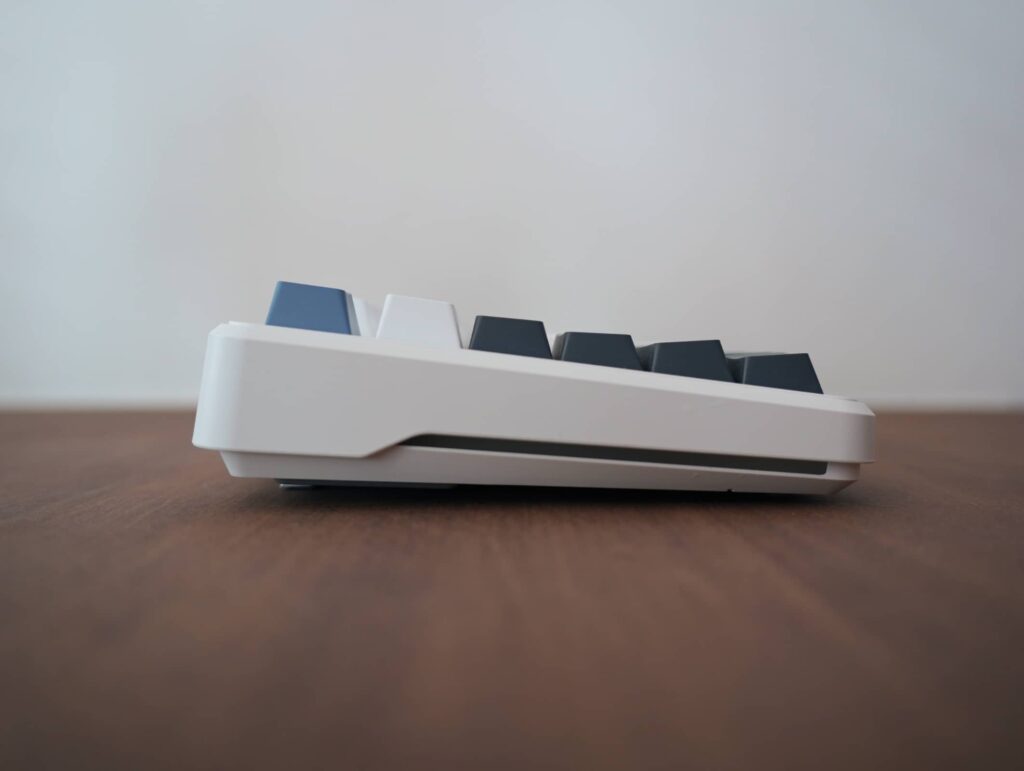
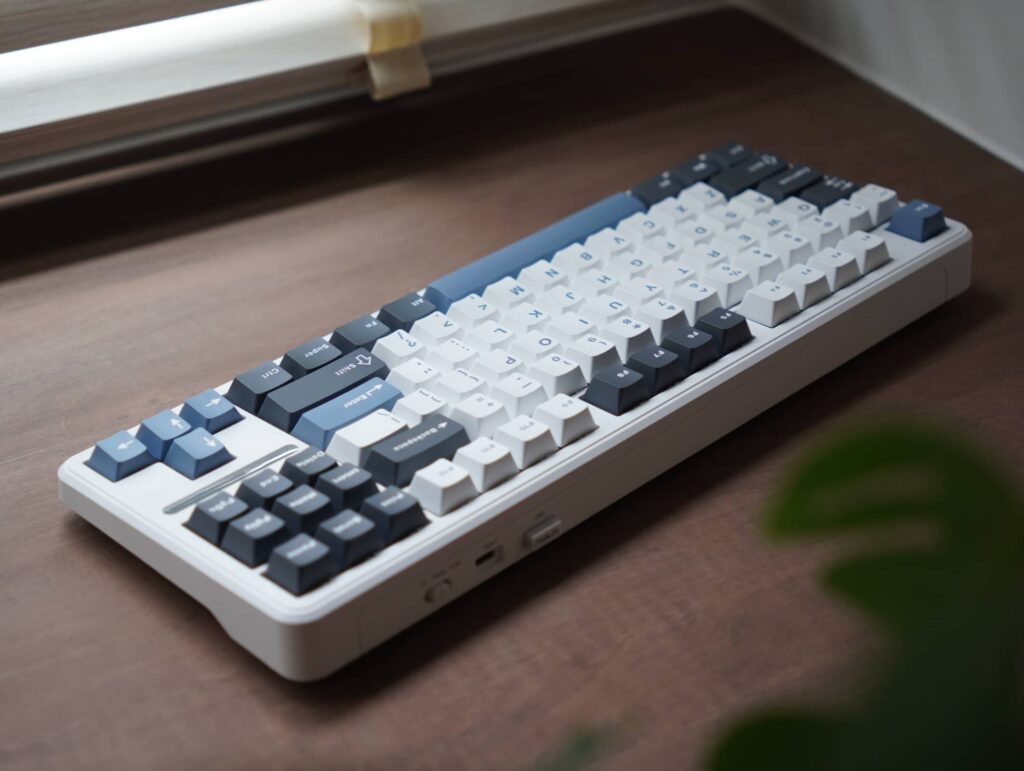
The USB-C port is right-aligned, flanked by a switch between the different connectivity modes and small drawer to store the 2.4GHz USB dongle.
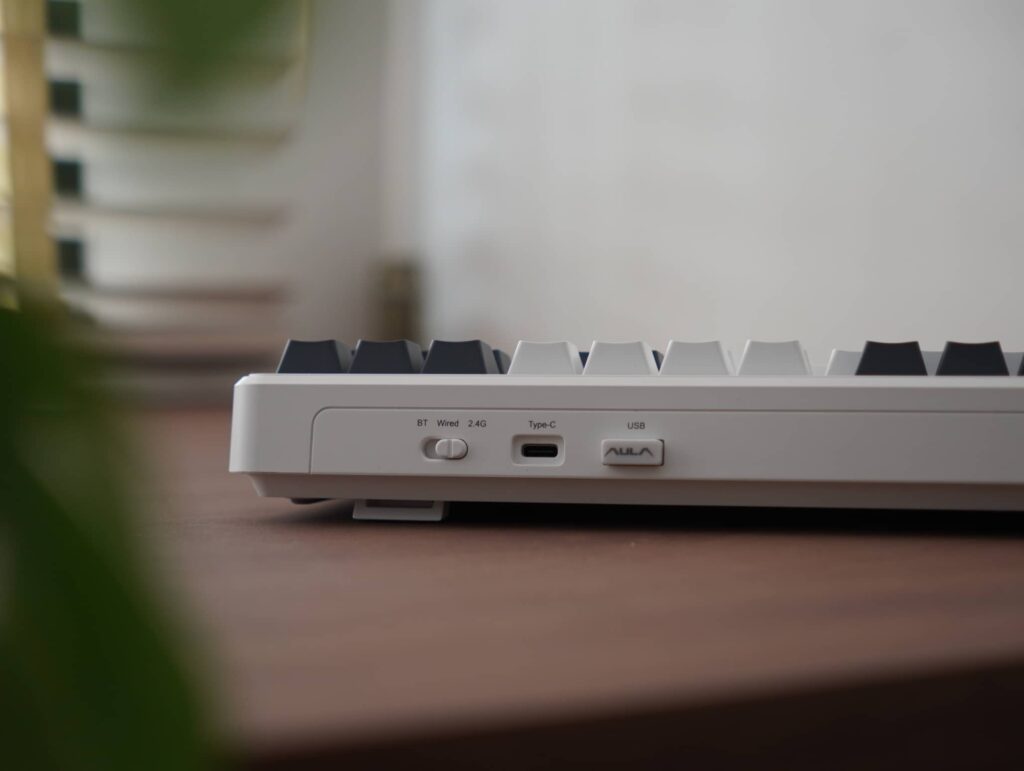
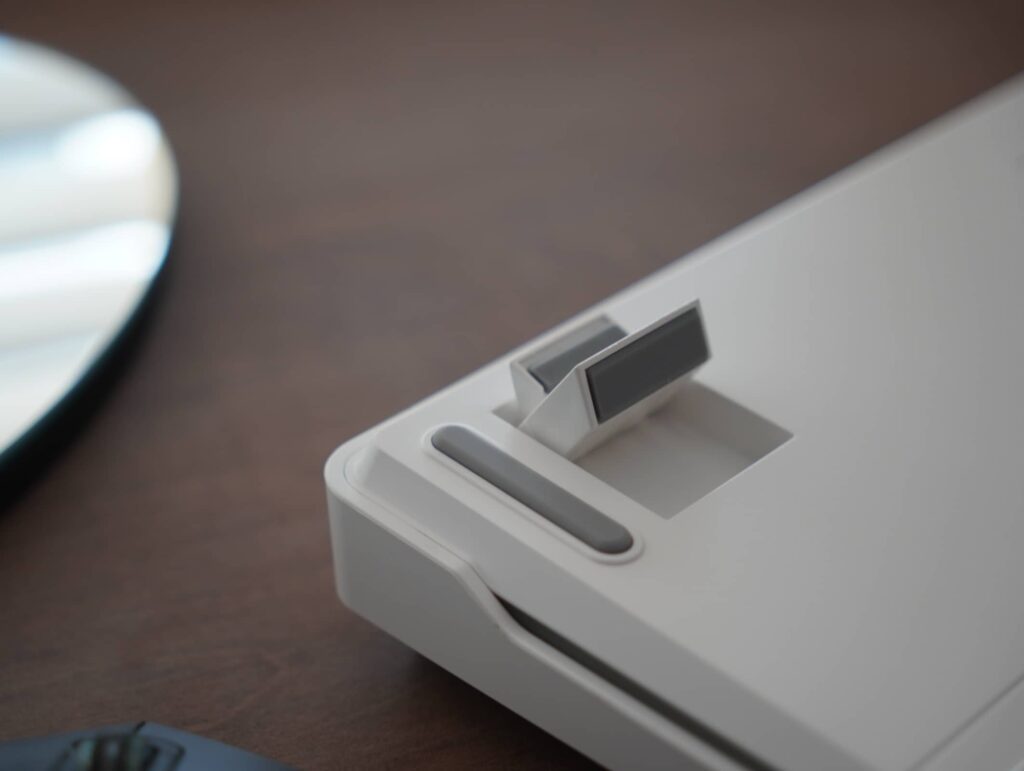
As the keycaps are not shine-through, RGB lighting gives off a clean looking underglow alongside a more edgy RGB strip along the side of the keyboard. You can customise these RGB lighting effects via keyboard shortcuts or use the AULA driver for more intricate settings. If RGB isn’t your thing, there is an option to turn it off.
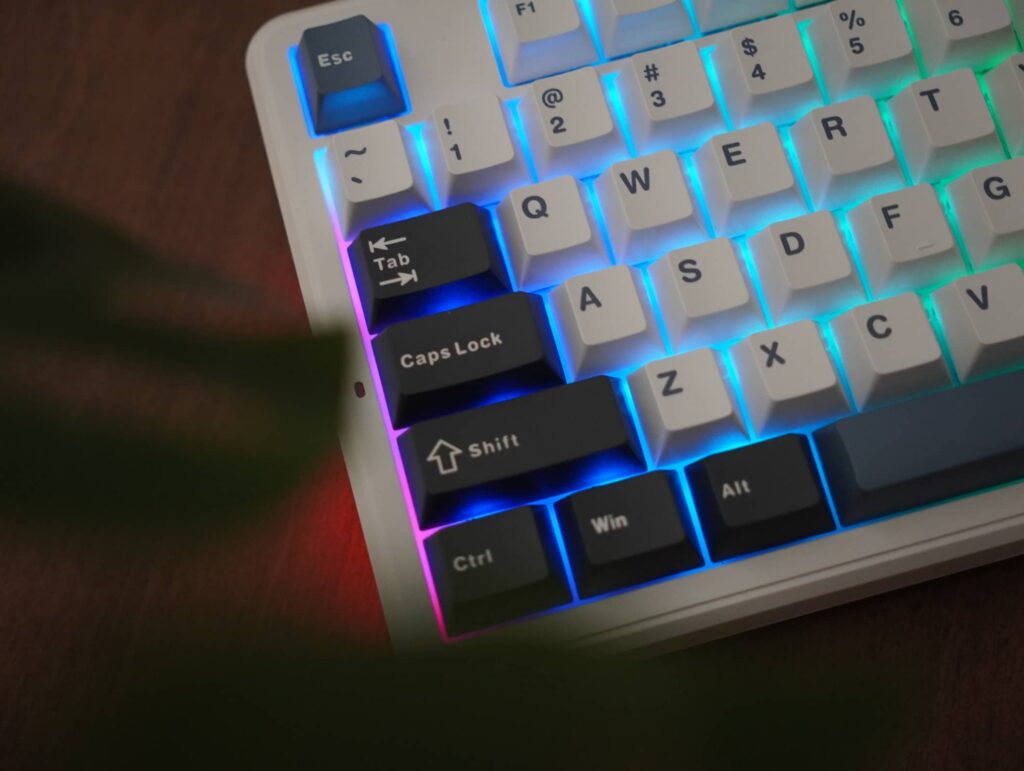
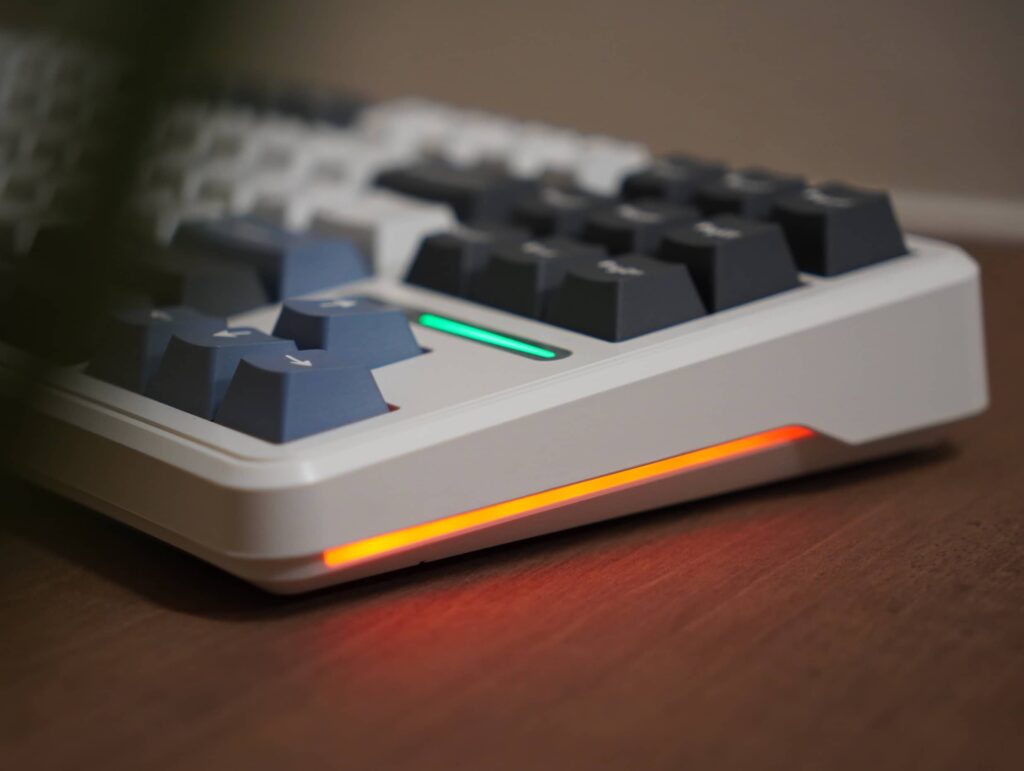
Not too sure if LEOBOG is part of the AULA brand, but the included switches inside the AULA F87 Pro are LEOBOG’s Greywood V4 linear switches are being used in the assembled keyboard.
- Top housing: PC
- Stem material: POM
- Bottom housing: PC
- Spring: Double-stage
- Total Travel: 3.6±0.3mm
- Operating Force: 40±3gf
- Bottom Force: 50±3gf
Typing acoustics & experience
EPOMAKER x AULA F87 Pro isn’t held together by screws but instead multiple plastic latch points which are commonly found in plastic pre-built keyboards. It is sightly tricky to dissemble the keyboard but I found using a plastic card quite useful. The AULA F87 Pro employs a gasket-mounted structure where the PC plate comes pre-attached with silicon on the edges to act as the gaskets. The PC plate has plenty of flex cuts. Underneath the plate, you will find a poron plate foam along with an IPXE switch pad. The PCB features per key flex cuts as well, and underneath it you’ll find a sound absorbing case foam.
Despite the use so flex cuts on both the PCB and plate, they typing experience is not as bouncy as I’d thought. This might be due to combination of things being sandwiched inside. Bottom out is not harsh and it still offers a comfortable typing experience. The FEKER Galaxy80 offers a softer typing experience.
The AULA F87 Pro doesn’t sound too much like every board that uses a IXPE switch pad above the PCB (ie. PE foam mod), which is fresh. The LEOBOG Greywood V4 linear switches offers a higher pitched downstroke which in overall gives what I’d describe as deep clacky sound. The bottom out has elements of thud as well. Overall, I’m quite liking the stock sound of the AULA F87 Pro. You can take a listen to the stock sound profile below.
AULA F87 Pro uses plate-mounted stabilisers and the stock performance of it is very good. No rattling or tick sounds were heard, and the spacebar offers one of the cleanest sound from a pre-build keyboard. The PCB is hot-swappable supporting both 3-pin and 5-pin switches, so it allows you to change the switches into something else in the future.
Connectivity and battery
Given it’s price and state of it being a pre-built keyboard, there is no VIA support but you can install the AULA driver to get into customised settings of key mappings, macros, and RGB customisations. However, I was unable to get the driver to sense the keyboard so I am unable to show any screenshots of it.
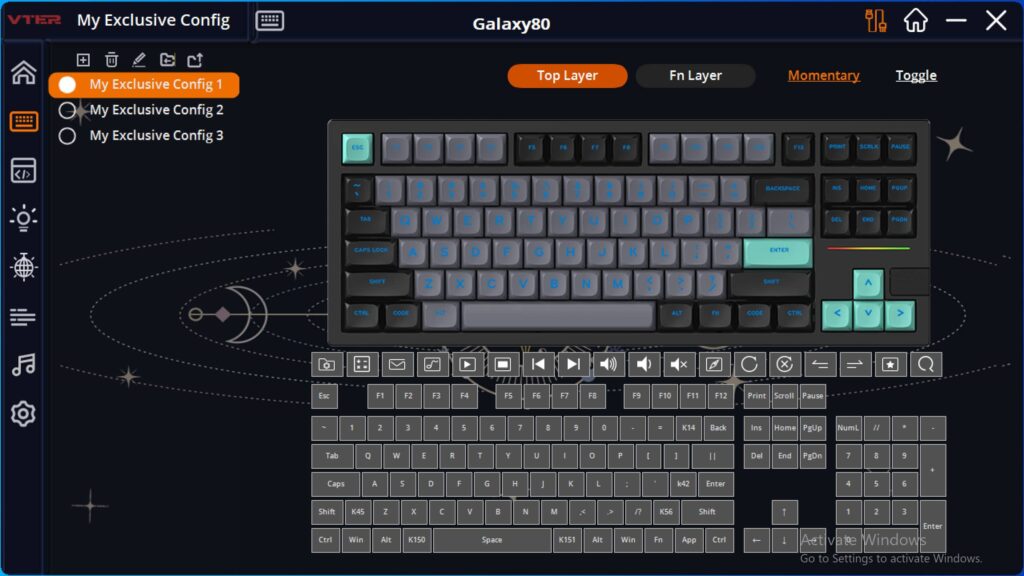
As for connectivity, AULA F87 Pro can be used in three ways – (1) wired via USB, (2) Bluetooth, and (3) 2.4GHz wireless. There is a 4,000mAh battery inside but there is no advice of how long it will last.
Conclusion
The EPOMAKER x AULA F87 Pro offers a rather value-for-money purchase with what it offers at its US$76 price point. It has an impressive stock sound, relatively clean and nice design, triple connectivity options, as well as basics such as hot-swappable. Only drawback is the lack of VIA support which competing products from Keychron offers. Having said that, the EPOMAKER x AULA F87 Pro is still the cheaper option. If all you need is a plug-and-play performer, the EPOMAKER x AULA F87 Pro is great at what it does.

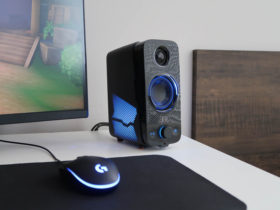
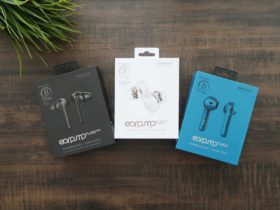
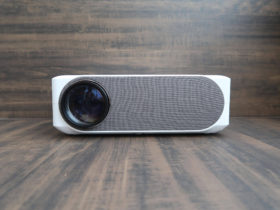
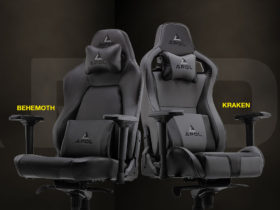
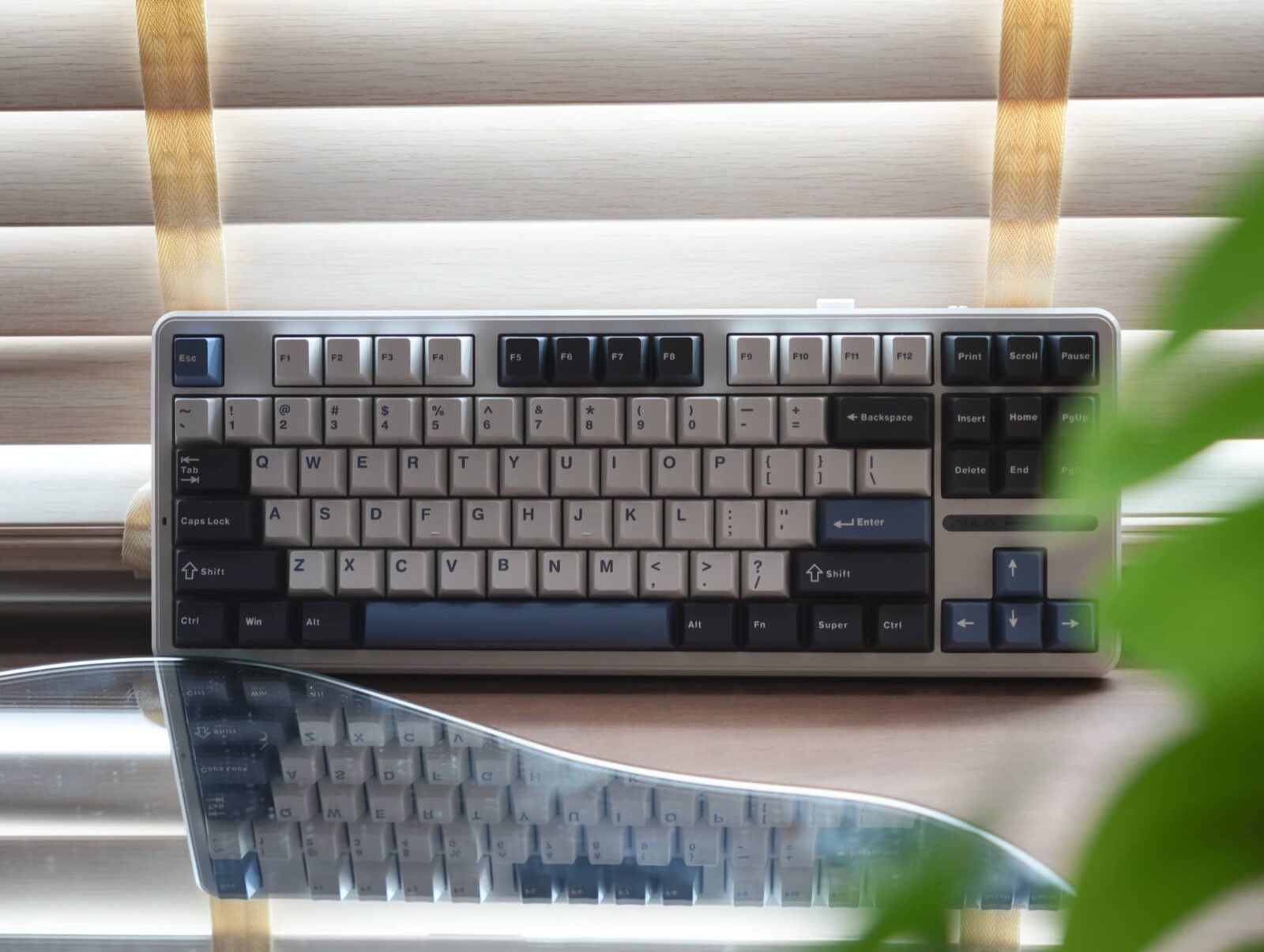
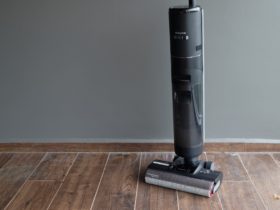



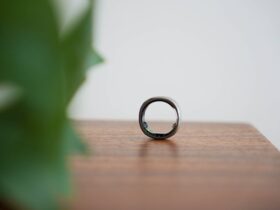
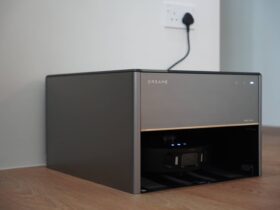
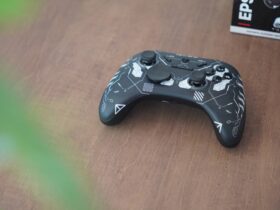
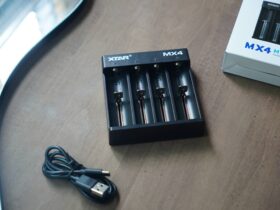
Leave a Reply